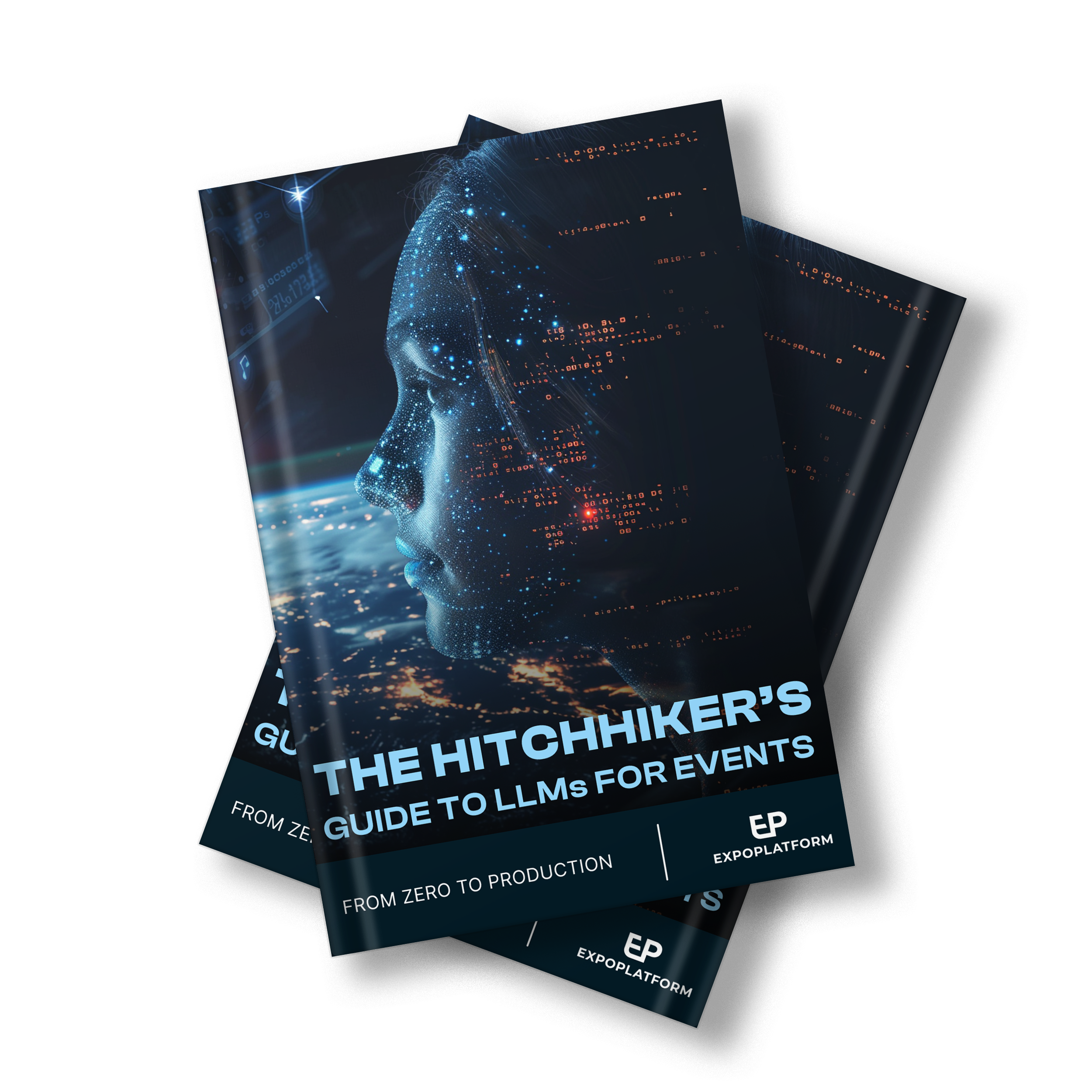
How to make more money with Smart Events: a complete guide
There’s one way forward for making more money in our industry – and that’s through building Smart Events.
We’ve seen an explosion in the amount of data available to organisers since the digital transformation of our industry. ExpoPlatform estimates there is 20 times as much information there to take advantage of compared with 2020.
Now, this tech-fuelled Smart Event format makes use of all that we have learned to combine advanced tools with data analytics to significantly enhance the value of your in-person offerings. There are five ways it does this:
- Pre-event planning and scheduling: Visitors can discover new products and suppliers pre-event. Connect buyers and sellers with AI matchmaking and hosted buying tools.
- Lead retrieval and ROI: Exhibitors and visitors scanning QR Codes. Give exhibitors a real-time lead scoring dashboard.
- Digital revenue: Create new revenue streams, providing new ways to experience products, services or locations.
- Extend reach: Stream content to global audiences, improving ease-of access to participants. Extend you event’s life year-round with marketplaces and content.
- Increase data and insights: Analyse what your visitors really want, how they navigate the event as well as understanding supply and demand dynamics.
This article will be focus on the the third of the benefits we’ve listed: how to significantly boost your opportunities to make money.
It comes as ExpoPlatform has just launched its Smart Event Showcase Series to explain how our solutions can improve your business with this model. The first session was How Smart Events Make You Money. Watch it here.
Luke Bilton, ExpoPlatform’s Chief Growth Officer, started the presentation by setting out one of the most important features of Smart Events in this area: lead retrieval.
He said: “Lead retrieval is absolutely central to delivering a Smart Event experience. Every time a visitor interacts online with an exhibitor’s profile ahead of the events that would all get tracked within the exhibitor’s ROI dashboard.
“Exhibitors can scan badges using the Smart Event app and then they can add notes and lead score them as they go. Another way of doing lead retrieval is from the visitor site. Enable visitors to scan QR codes themselves – scanning content, QR codes or products and exhibitors.”
He added: “All of this should be pulling into one unified dashboard so that an exhibitor is able to see all of these different touch points – from how people have interacted with me and make it very easy to follow up, arrange meetings and get in touch.”
Now let’s go into how Smart Events can drive up your revenue.
Smart Event segmentation
The first step in being able to drive revenue is through segmenting your client base.
Organisers should package their inventory into a series of easy-to-buy bundles with pricing to reflect the value your customers will receive at each tier.
This is because not all exhibitors are equal, with a wide range of budgets and expectations. An important consideration when drawing up your digital packages is to have solutions which will suit companies of all sizes.
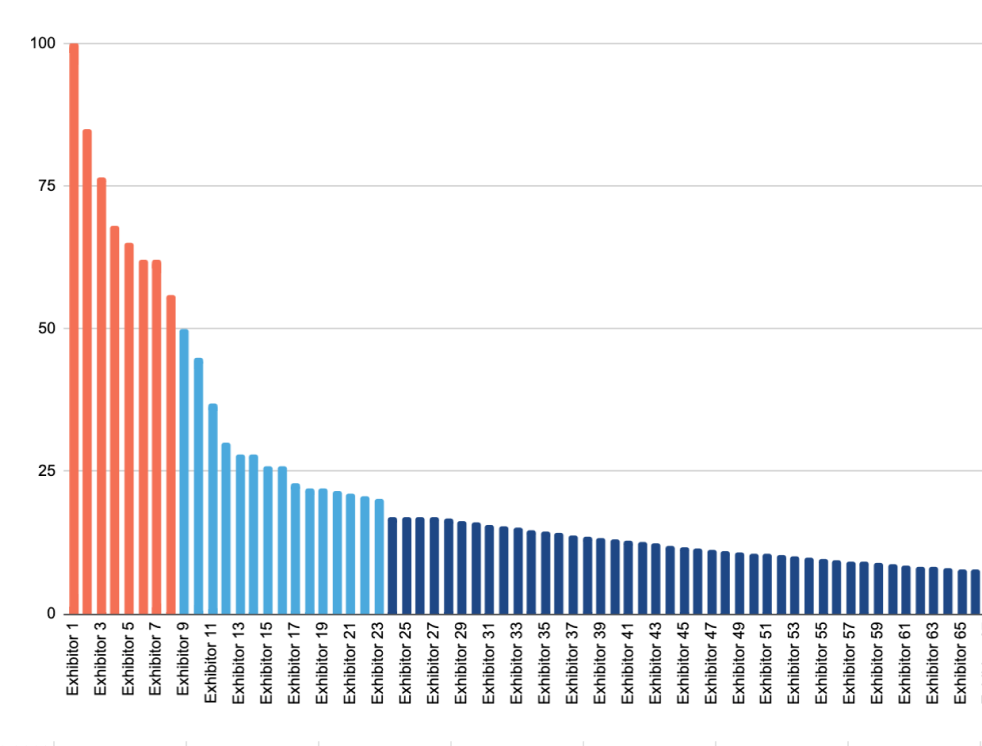
Luke said: “You can you can create premium packages for key accounts, then there’s the middle tier who often have budgets available for interesting opportunities and they might be interested in talking to your sales team about exploring different options.
“The most important part of it is that really large long-tail of of exhibitors who are buying stands. The best way you can make an impact is by having something which can be scaled out in a standardised way across that long-tail of customers.”
The “long-tail” segment of clients account for around 70% of customers and targeting them is crucial to raising digital revenue to 25%.
Tiered packages for Smart Events
Organisers can now begin to think about how they package their offerings for each segment and then price them accordingly.
We’ve used the example of Bronze, Silver, Gold and Platinum clients. Major and mid-tier accounts should be offered higher-value sponsorship of new products which have been developed.
Higher-range packages can then be sold to mid-tier and “bellwether” key accounts, with each priced relatively and with potential to be paid for annually.
See here for an example of what each level of package might include:
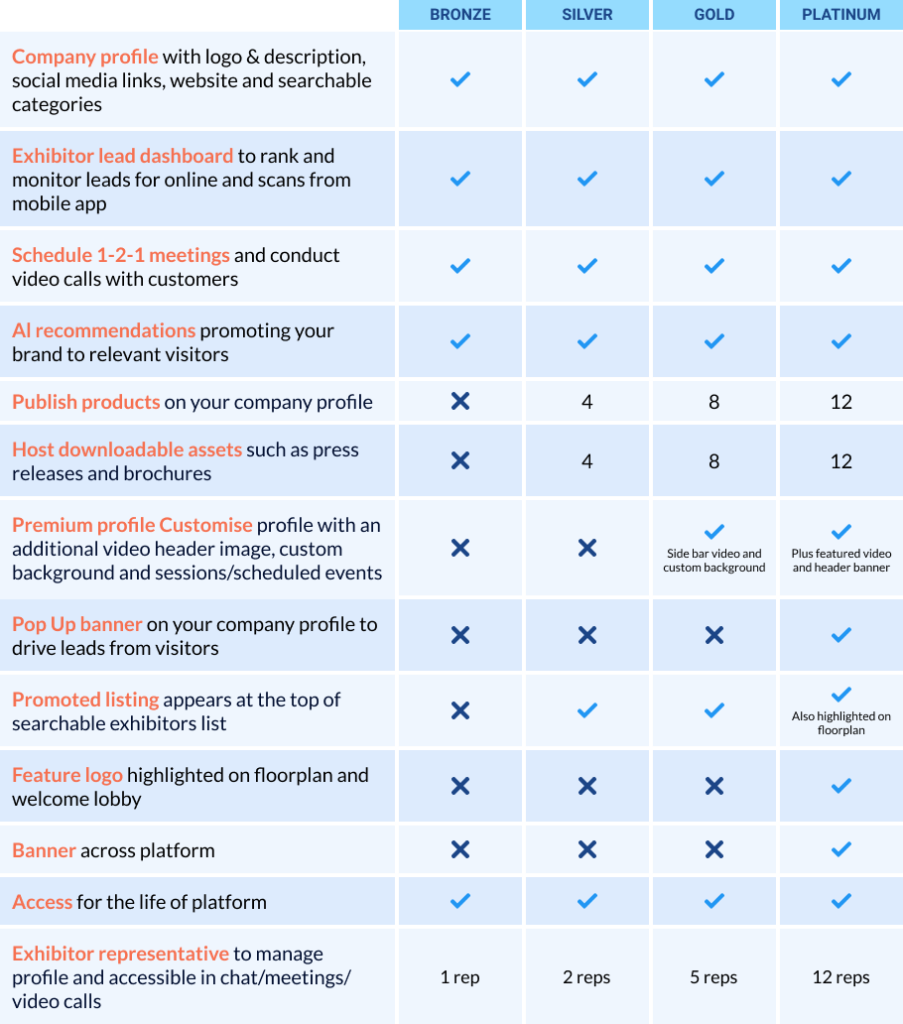
Luke highlighted an AMR study which predicts digital revenue for an organiser is due to go from 2% of their total in 2019 to 25% moving forward. But this change means an organiser’s customers are getting more from an event and pricing should reflect what’s now being offered.
He said: “That’s a real shift and I certainly believe that all teams in all industries need to find a way to make this digital transition. There’s been so much disruption – everything has had to chop and change.
“If you’re relaunching your in-person events as a Smart Events with new bells and whistles – not just booking a stand anymore, you’re also going to get leads retrieval, ROI dashboarding, a year-round marketplace -present all of that as a complete step-change in what came before and make a break from from those legacy price points.”
Luke added: “I would think of it in the same light as launching a new show – completely revamping your sales collateral, revamping the value proposition and making sure that the value proposition is tied into what the key pain points and challenges are.”
Three types of upselling solutions
There are three main types of sponsored digital solutions for Smart Event monetisation: thought leadership, branding and lead generation services.
This format can give an organiser a large amount of inventory before, during and after an event. Remember: most customers will want a blend of all three.
Branding
This is all around advertising, sponsorship and brand awareness. Often it will be the higher end of your customer base.
A mobile app splash screen is one example of a premium position which would be typically would just be used one or two customers. An organiser can also include sponsorship of the the QR codes and the badges.
There are various different advertising positions on the web app. Events which stream a lot of video online can include pre-roll advertising. These could be same ads for all or more targeted through an AI matchmaking algorithm.
Thought Leadership
Content is king in this sphere. This is where exhibitors share material to position themselves as a thought leader.
An organiser can offer a blend of what’s happening before, during and after events. Commonly used tools include virtual roundtables or meetups in the build up to the show or afterwards. This can be really effective for targeting special interest groups with sponsored editorial.
It’s important to remember that this can be customised for your industry. It may be video interviews with executives for one audience, whereas another might prefer a product demonstration.
Lead Generation
This involves which are going to create leads a team can follow up on, download put into a CRM and and use. Most of the examples already given capture leads in one way or another – but there’s more. An organiser can create on-demand webinars, sponsored white papers and ebooks. You could as far as having a year-round library of resources which ca built up and used accordingly.

Smart Event revenue modelling
For this section we are going to imagine a typical event of 1,000 exhibitors and 20,000 visitors.
You start with your basic listing for all sellers – they will also get a basic profile on the event app and the web app because you want everybody to be part of your exhibitor list. The next job is about upselling everybody into different types of solutions.
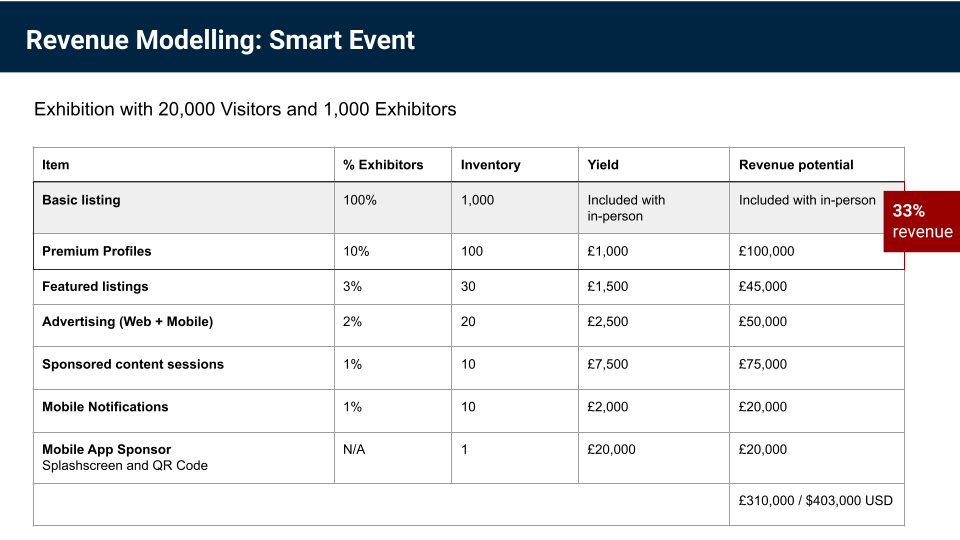
Luke said: “Because you’re not charging for the basic listings, that means the company profile part of this represents about a third of the overall revenue opportunity from the event.
“What makes a big difference though is if you extend this post-event – it can be either extending the current events platform and keeping it open for 12 months, or an entire separate 365 Community platform that comes with real incremental revenue opportunities.”
The difference is that an exhibitor can almost expect to be put on the listing because they are participating in the event, however providing them with a year’s worth of exposure through a year-round marketplace has much higher value.
It also creates new opportunities for advertising, sponsorship and lead generation year-round – as well as webinars, virtual roundtables, hosted buyer events or other different ways to maintain engagement.
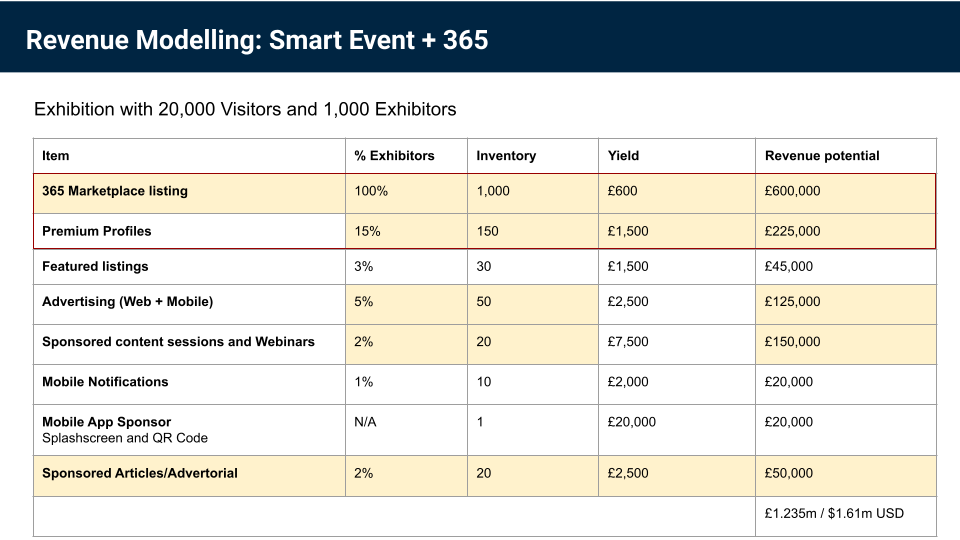
Online marketplaces come with some specific advantages for event organisers as part of this extended engagement:
- Audience growth. A brand can become embedded into the workflows of buyers year-round by providing an essential tool for finding and comparing products and services, which can significantly grow your audiences.
- Revenue growth. Bundling recurring revenue subscriptions to a marketplace alongside exhibiting at an event is an opportunity to increase the value of exhibiting, gives suppliers more leads and ROI.
- Brand protection. Most importantly, having a marketplace in your portfolio presents the opportunity for forward-thinking organisers to embed themselves in the transactions between our visitors and exhibitor audiences outside the confines of an exhibition.
Marketplaces should be viewed as an essential part of the new omnichannel event model, creating seamless customer experiences across live and digital channels.
A McKinsey & Co study found that 94% of B2B customers now find this sales approach at least as effective as the more traditional model, compared with 65% in April 2020.
ExpoPlatform’s example shows how a relatively small amount of money – £600 for a 12-month listing in a marketplace – makes a huge impact on the revenue when done at scale.
Luke added: “That really does ramp everything up. Just that bit alone accounts for around about two-thirds of the whole revenue. If you can charge everybody in that longtail a relatively small amount, that makes makes a massive impact overall.
“Keeping the platform open post-event is a core part of the value proposition. It does make a 300% increase in revenue – two-thirds of that is the marketplace listing.”
Conclusion
Smart Events are about adding value to the experience of all participants. But there is another element – they offer flexibility, security and diversity.
This format helps an organiser to futureproof their business by widening the scope of their revenue potential. In-person is back and coming back strong, however things have changed and the smart planner will recognise that.
Luke said: “The overall context for why revenue diversification is important should be familiar to everyone after the last couple of years that we’ve had. AMR’s top 20 list over from from 2019 to 2020 shows the top organisers lost around 70% of of revenues in that first year of the pandemic.
“Covid-19 levels in the UK right now are as high as they’ve ever been, but it’s a fairly mild version of it and restrictions have all been lifted. That’s not the case in other parts of the world like China. Sustainability is going to increasingly be an issue – and there is a awful awful war happening 1,000 miles to my east.
“There’s all sorts of reasons why in-person events are going to have to be able to stay agile, have to diversify their revenue stream. The move to digital revenues and the importance of digital revenues is not going anywhere.”
We hope you enjoyed reading this article and found it useful. At ExpoPlatform, we want to help you build better events and communities. Please get in touch and ask for a demo here. Thank you.
There's more you might like
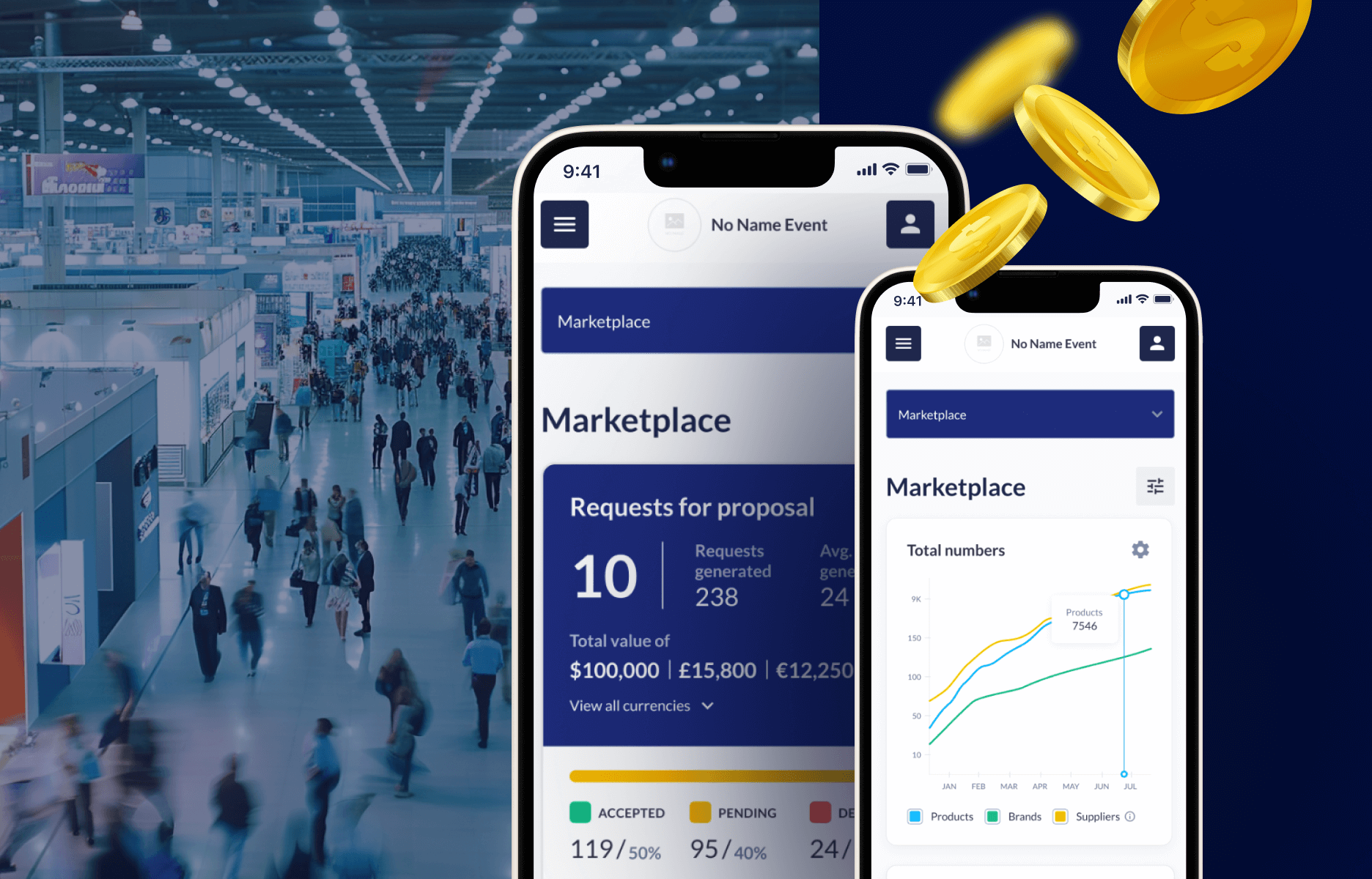
Budget smarter: essential tradeshow cost guide
Tradeshows are becoming more expensive to organise. Geopolitical tensions are affecting supply chains and economic uncertainties are pushing upward pressure on inflation. In addition, rising venue rental costs and wage pressures are weighing down on already constrained budgets by companies demanding measurable outcomes and demonstrable ROI. Organisers have their task cut out – manage the ...
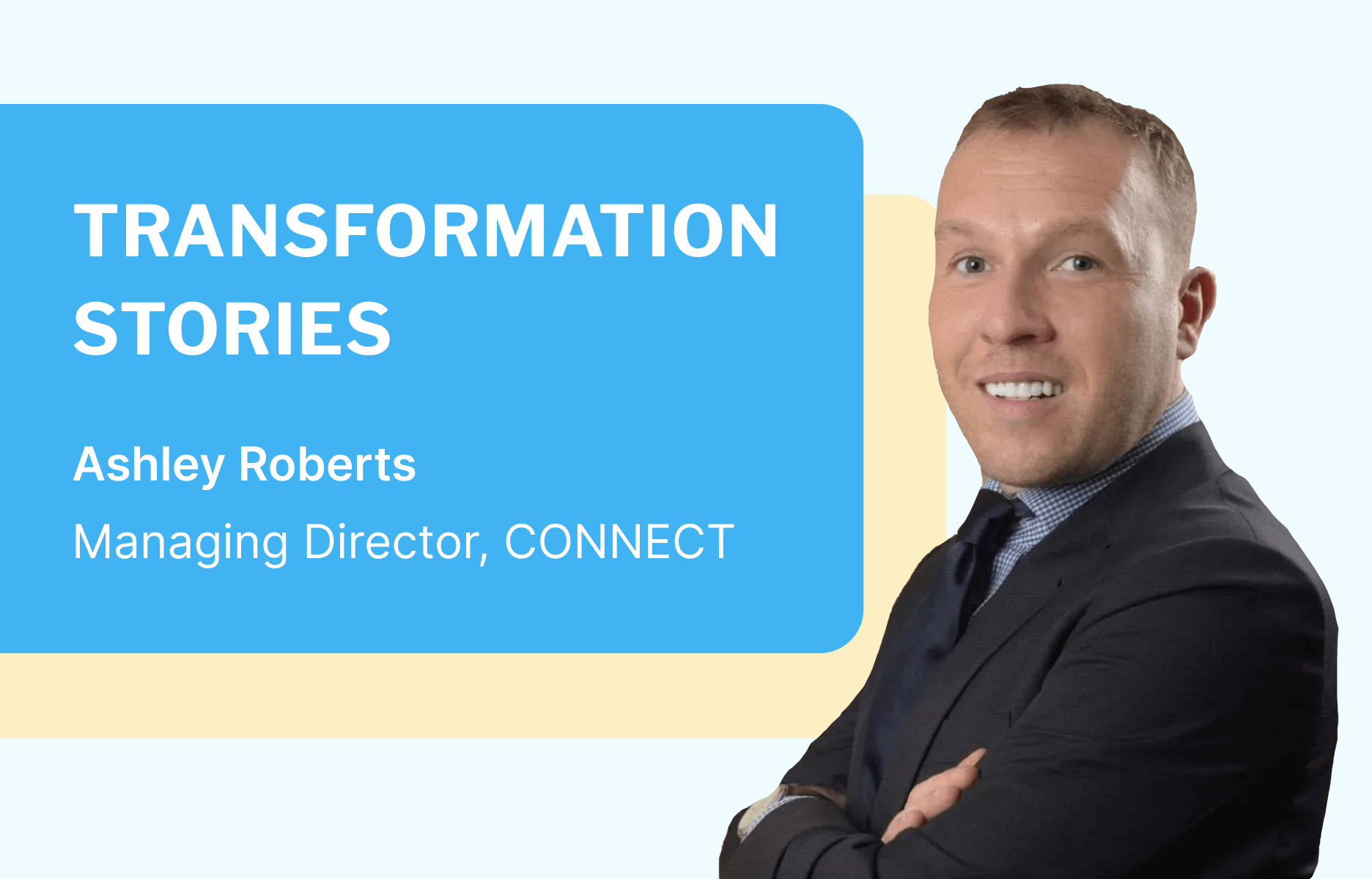
Event market consolidation ‘creates room’ for innovators
Market consolidation may create “unhealthy competition” but leaves opportunities for smaller planners, according to an industry leader. Ashley Roberts, managing director for CONNECT, highlighted how a growth in acquisitions over recent years can stifle innovation because many are unable to compete with the “large tool chest” of major groups. But he believes it opens doors ...
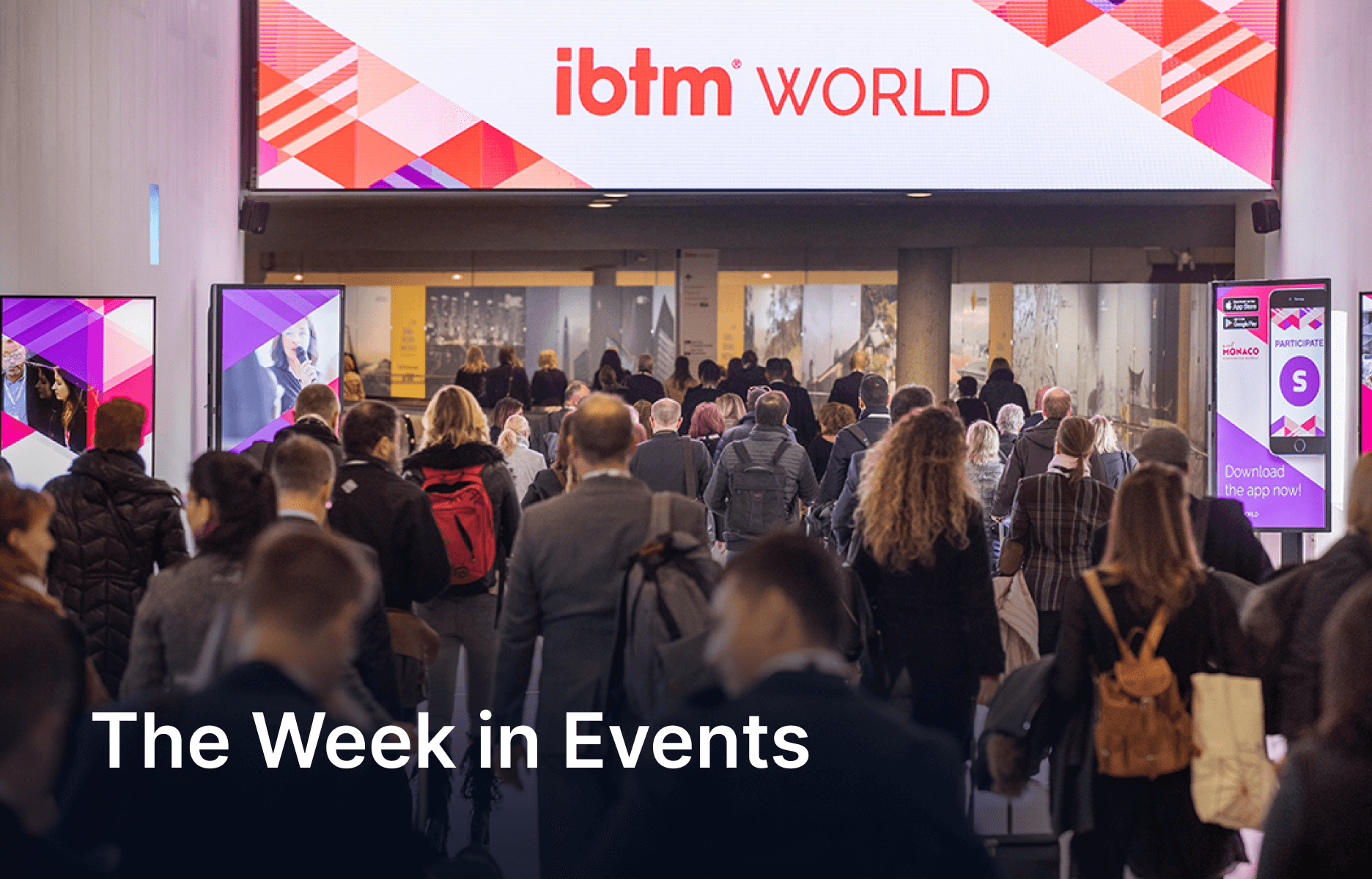
AI to hyper-personalise 2024 event engagement – IBTM report
The hyper-personalisation of event engagement has been highlighted as a key focus for 2024 in a new report. Predictions from the IBTM study suggest technology and attendees will start to interact to create a more personalised user experience. You can read more of this main story below. Other pieces in this week’s event roundup include: ...

